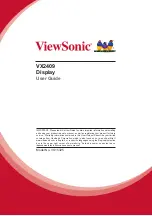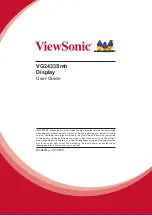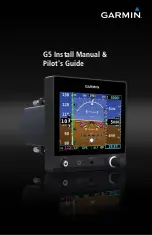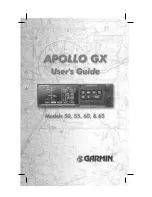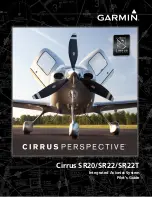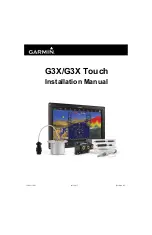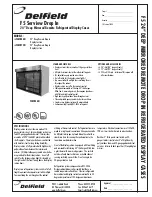
Co-Pilot II reference manual
2
FMA Direct
Co-Pilot™ II features
n
Works with all types of radio systems, including all spread
spectrum radios. The Co-Pilot II Computer Module installs
between your existing receiver and servos.
n
Supports analog servos and high-resolution digital servos.
n
As with all previous Co-Pilot models, the system offers ac-
curacy to 1 degree of the horizon by sensing the temperature
variation between the earth and the sky. Just center the control
sticks and Co-Pilot II will right your model from any attitude.
n
The optional Vertical Sensor Module forces the system to roll
out of inverted to prevent the aircraft from striking the ground
if recovery is required at low altitude. When installed, the
Vertical Sensor Module also automatically performs continual
calibration.
n
Stabilizes up to 4 channels for compatibility with virtually any
aircraft configuration, including CCPM helicopters, dual or
differential ailerons and flapperons.
n
Works in most weather conditions, with the exception of
heavy rain and severe overcast. Temperature differential
will be displayed on the IRNet Programmer during preflight
checks.
n
Provides flight stabilization with a “natural flight” feel. Co-
Pilot II includes stick priority to provide a natural flying “feel”
when using flight stabilization. With stick priority, Co-Pilot
II automatically reduces flight stabilization sensitivity when
you move the stick farther away from center. This results in a
natural flying experience without sacrificing recovery time.
n
On/Off remote control can be set up on any auxiliary transmit-
ter switch, slider or knob.
n
Flight Modes allow for setting up different stabilization char-
acteristics on any type of auxiliary transmitter switch or knob.
You can switch between basic stabilization and aerobatic
modes with the flip of a switch. 3D modes include stabiliza
-
tion during vertical hover, knife edge, and inverted flight.
Learn new aerobatic maneuvers with safety and confidence.
n
Co-Pilot II uses SMT components and tiny infrared thermo-
piles that reduce the profile of sensor modules by about 50%
over previous Co-Pilot models.
n
Digital conversion takes place within the sensor modules, vir
-
tually eliminating the potential for analog noise in any instal-
lation. Communication between the sensor modules and the
Co-Pilot Computer Module is sent over standard, 3-wire servo
connectors.
© 2009 FMA, Inc. All rights reserved. Reproduction of this publication is prohibited.
Co-Pilot is a trademark of FMA, Inc.
U.S. Patent 6,181,989. Patents held in Germany and UK. Patents pending elsewhere.
4/16/2009
Introduction
IRNet wireless user interface
Co-Pilot II includes a wireless user interface for simplified sys
-
tem setup and monitoring. This is a new technology developed
by FMA called IRNet. IRNet consists of a wireless infrared
4-button programmer containing a 2-line, 16 character LCD, and
a wireless network router. The router is mounted on the aircraft
and is capable of supporting multiple IRNet compatible devices.
Each device on the “network” communicates with the IRNet
programmer using a unique address, much like the network of
computers in your office, but on a smaller scale.
Connected IRNet peripherals are represented as separate devices
in the programmer, each supporting its own unique menu system.
Setting up an IRNet device is as simple as scanning for the de-
vice’s welcome screen and answering a series of questions, much
like using a television remote.
Monitoring system information in real time is as easy as scrolling
through the available data screens. IRNet enables you to perform
preflight checks on every critical piece of electronics in your air
-
craft—without having to remove a wing or even plug in a wire.
IRNet range is dependent on weather conditions but ranges from
30 to 200 feet, line of sight.
Co-Pilot II is the first IRNet peripheral to be made available by
FMA/Revolectrix, but IRNet applications will extend far beyond
the Co-Pilot II. This means that by purchasing Co-Pilot II, you
are already set up to use any future IRNet peripherals that be-
come available. Items under consideration include GPS integra-
tion, on-board wattmeter, tachometer, temperature sensor, digital
servo matchbox, tools for selecting appropriate electric propul-
sion components and others.
Note:
Co-Pilot II is a unique product—it’s quite different from
other radio control equipment you may have used. Since new
concepts are involved, take your time and work through the
manual carefully.




















